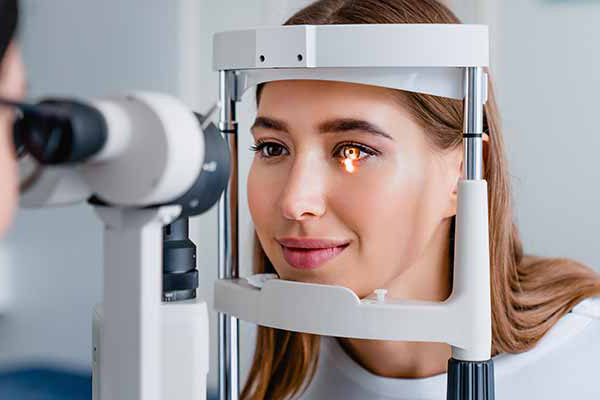Andalusia Pediatrics: Compassionate Look After Your Children
Andalusia Pediatrics: Compassionate Look After Your Children
Blog Article
The Advantages And Disadvantages of Different Refractive Surgical Procedures for Improved Eyecare

LASIK Surgery
LASIK surgical procedure is a generally done refractive treatment that intends to remedy vision problems such as astigmatism, nearsightedness, and farsightedness. This surgical method has actually obtained appeal due to its performance in offering individuals with more clear vision and minimizing their reliance on glasses or contact lenses. Throughout the procedure, a thin flap is developed on the cornea, and a laser is made use of to reshape the underlying cells, correcting the refractive error. The flap is after that rearranged, enabling fast healing and very little pain for the patient.
Among the main benefits of LASIK surgery is the fast improvement in vision experienced by lots of clients. A lot of individuals see a significant enhancement in their sight shortly after the procedure, with minimal downtime required for recovery. Additionally, LASIK is understood for its high success rate and low occurrence of problems when performed by experienced surgeons. Like any type of surgical procedure, LASIK additionally carries some risks, consisting of completely dry eyes, glow, halos, and under or overcorrection of vision. It is vital for people thinking about LASIK surgery to undertake a complete assessment by an eye treatment professional to determine if they appropriate prospects for the procedure.
PRK Treatment
The PRK treatment, likewise understood as Photorefractive Keratectomy, is a kind of refractive surgery that aims to fix vision issues comparable to LASIK surgical procedure. Unlike LASIK, which involves creating a flap in the cornea, PRK works on the surface area layer of the cornea.
One of the benefits of PRK over LASIK is that it eliminates the danger of flap-related problems considering that no flap is created throughout the surgical procedure. Regardless of the longer recuperation duration, PRK can be a suitable choice for people looking for vision adjustment surgery.
SMILE Surgery
An advanced refractive surgery method acquiring popularity in the area of ophthalmology is SMILE Surgical treatment. Little Laceration Lenticule Removal (SMILE) is a minimally intrusive procedure that remedies vision by reshaping the cornea making use of a femtosecond laser. Unlike conventional LASIK surgery, SMILE Surgical procedure includes creating a read what he said little incision in the cornea to remove a lenticule, which causes less disturbance to the corneal structure and possibly faster healing times.
One of the key benefits of SMILE Surgery is its capacity to deal with myopia (nearsightedness) and astigmatism with high accuracy, resulting in excellent aesthetic results for patients. The minimally intrusive nature of the procedure likewise lowers the threat of issues such as dry eye disorder, making it a desirable alternative for individuals seeking refractive surgical procedure.

LASEK Strategy
Having actually explored the benefits and factors to consider of SMILE Surgical treatment, an additional notable refractive surgery strategy worth analyzing is the LASEK Strategy. LASEK, which means Laser-Assisted Subepithelial Keratectomy, is a kind of laser eye surgical treatment that intends to fix refractive errors such as nearsightedness (nearsightedness), hyperopia (farsightedness), and astigmatism.
Unlike LASIK, LASEK does not involve producing a corneal flap. Rather, during a LASEK treatment, the surgeon makes use of a diluted alcohol option to loosen up the thin external layer of the cornea, known as the epithelium. This layer is then carefully relocated aside to permit the laser to reshape the underlying corneal tissue. As soon as the cornea has been improved to the desired degree, the epithelial layer is rearranged.
Among the key advantages of LASEK is that it can be suitable for individuals with slim corneas that might not be excellent prospects for LASIK. Furthermore, LASEK commonly results in minimal post-operative discomfort and a quicker recovery time compared to PRK. The aesthetic recuperation procedure with LASEK might be a little longer than with LASIK.
Implantable Call Lenses
Implantable Call Lenses offer a long-term vision improvement solution for individuals looking for a choice to traditional contact lenses or glasses. These lenses, likewise called phakic intraocular lenses, are surgically inserted into the eye to correct refractive errors such as nearsightedness (nearsightedness), hyperopia (farsightedness), and astigmatism. cardiologist andalusia. Unlike traditional contact lenses that remain on the surface of the eye, implantable contact lenses work within the eye itself, offering clear vision without the requirement for day-to-day upkeep or removal
Among the essential advantages of implantable contact lenses is their permanence. As soon as put, they can remain in the eye indefinitely, supplying secure and constant vision improvement. In addition, these lenses can be an excellent option for individuals that are not great prospects for laser eye surgery or who prefer a reversible vision modification treatment.
Nevertheless, implantable call lenses do bring some risks, including the capacity for cataracts or raised eye stress. It is essential for individuals considering this option to seek advice from with an eye treatment professional to determine if implantable contact lenses are the best selection for their details demands and eye health.
Verdict
In conclusion, each type of refractive surgical treatment has its very own advantages and drawbacks. LASIK surgical procedure is special info preferred for its quick healing time, while PRK treatment might be appropriate for individuals with slim corneas.

On The Whole, SMILE Surgical procedure offers an appealing option for people looking to improve their vision through refractive surgery.
Report this page